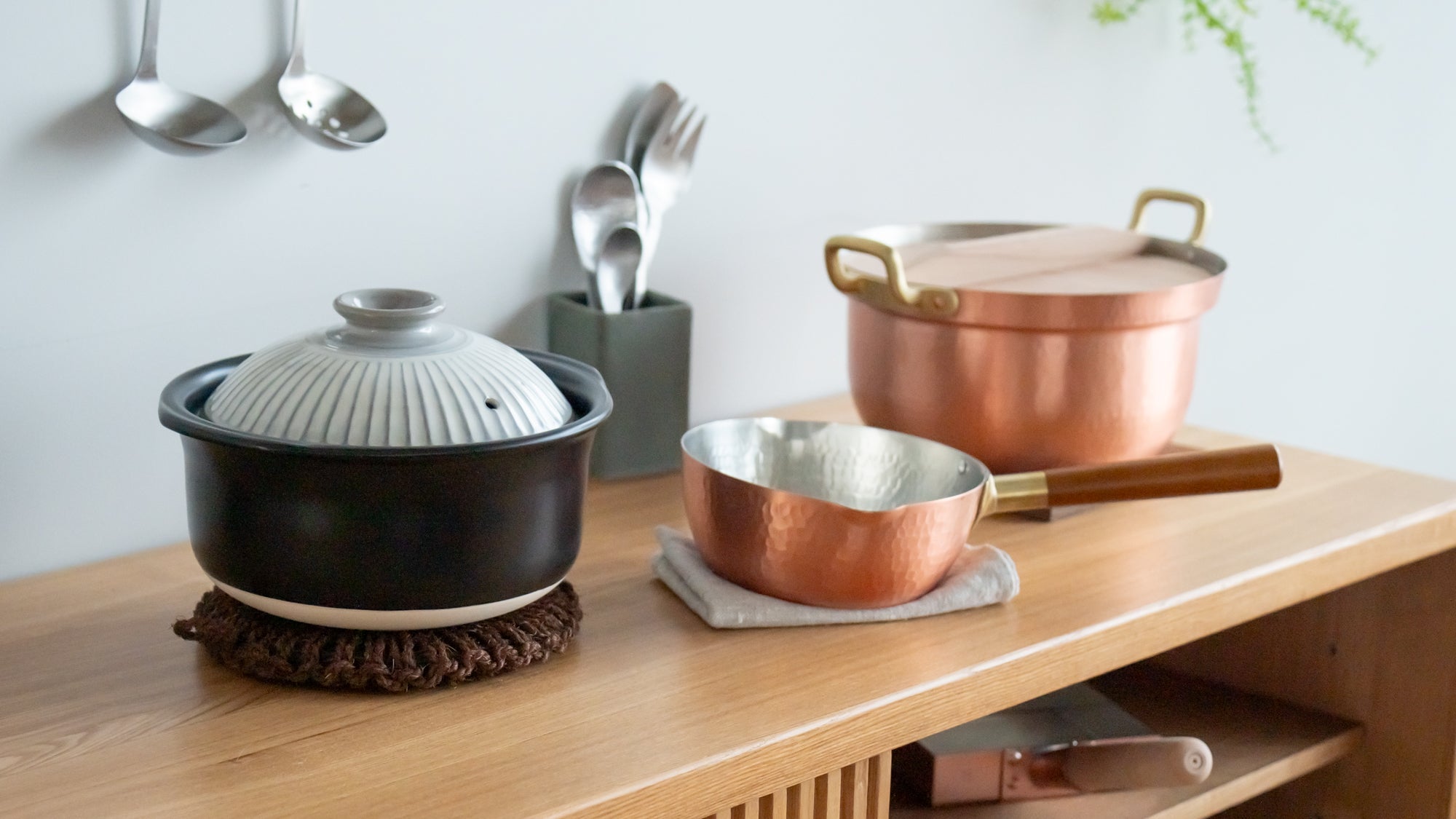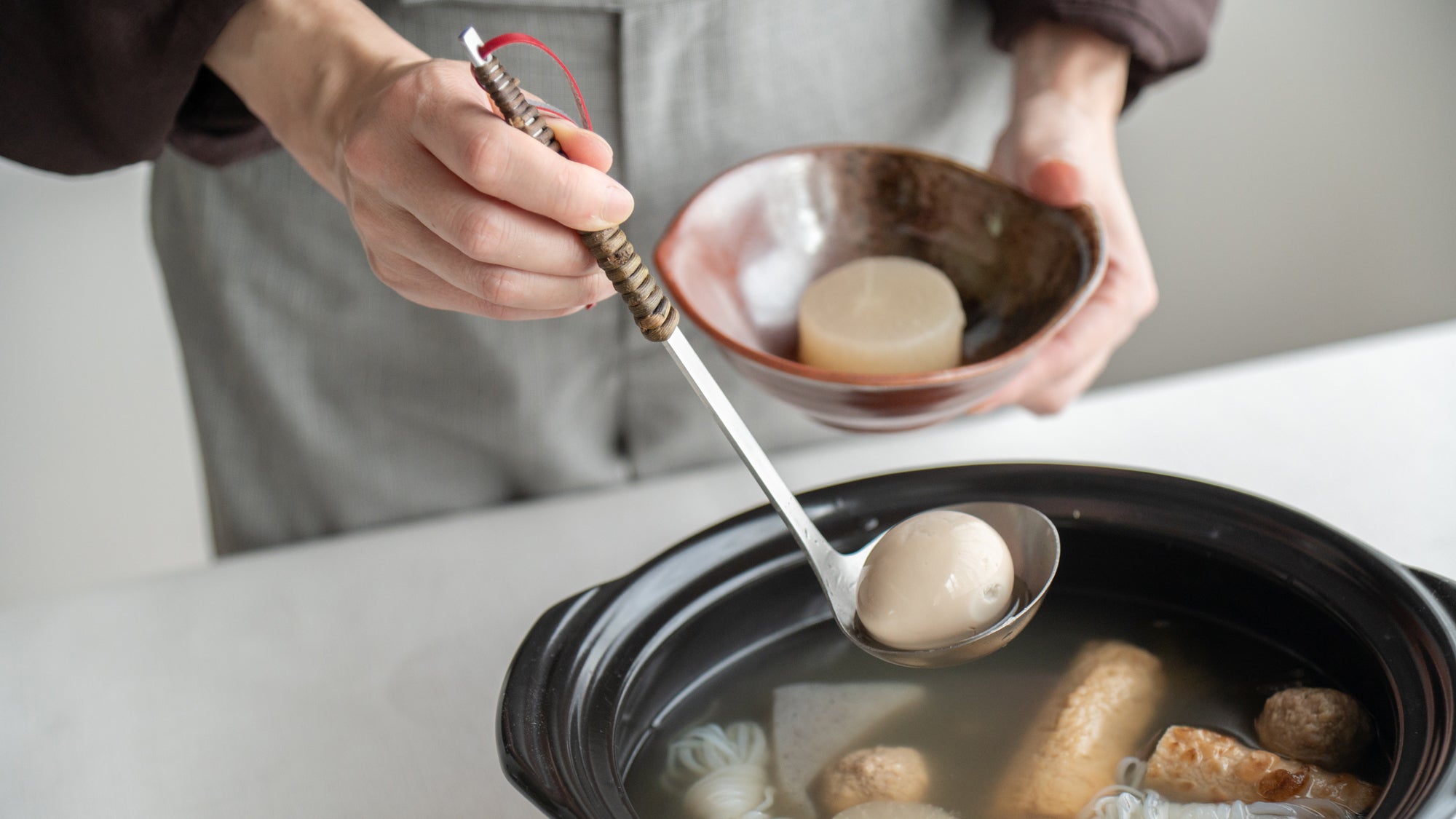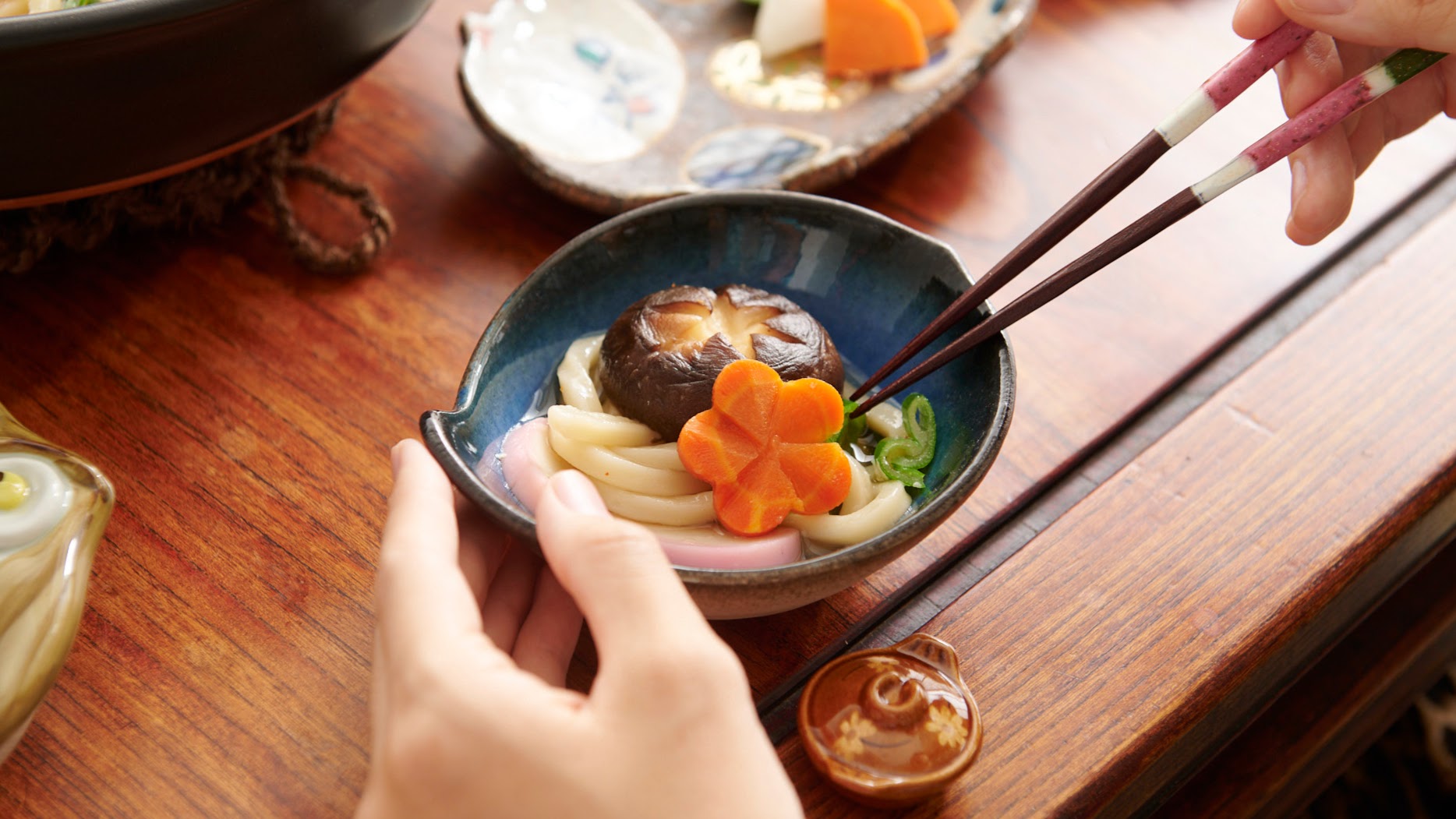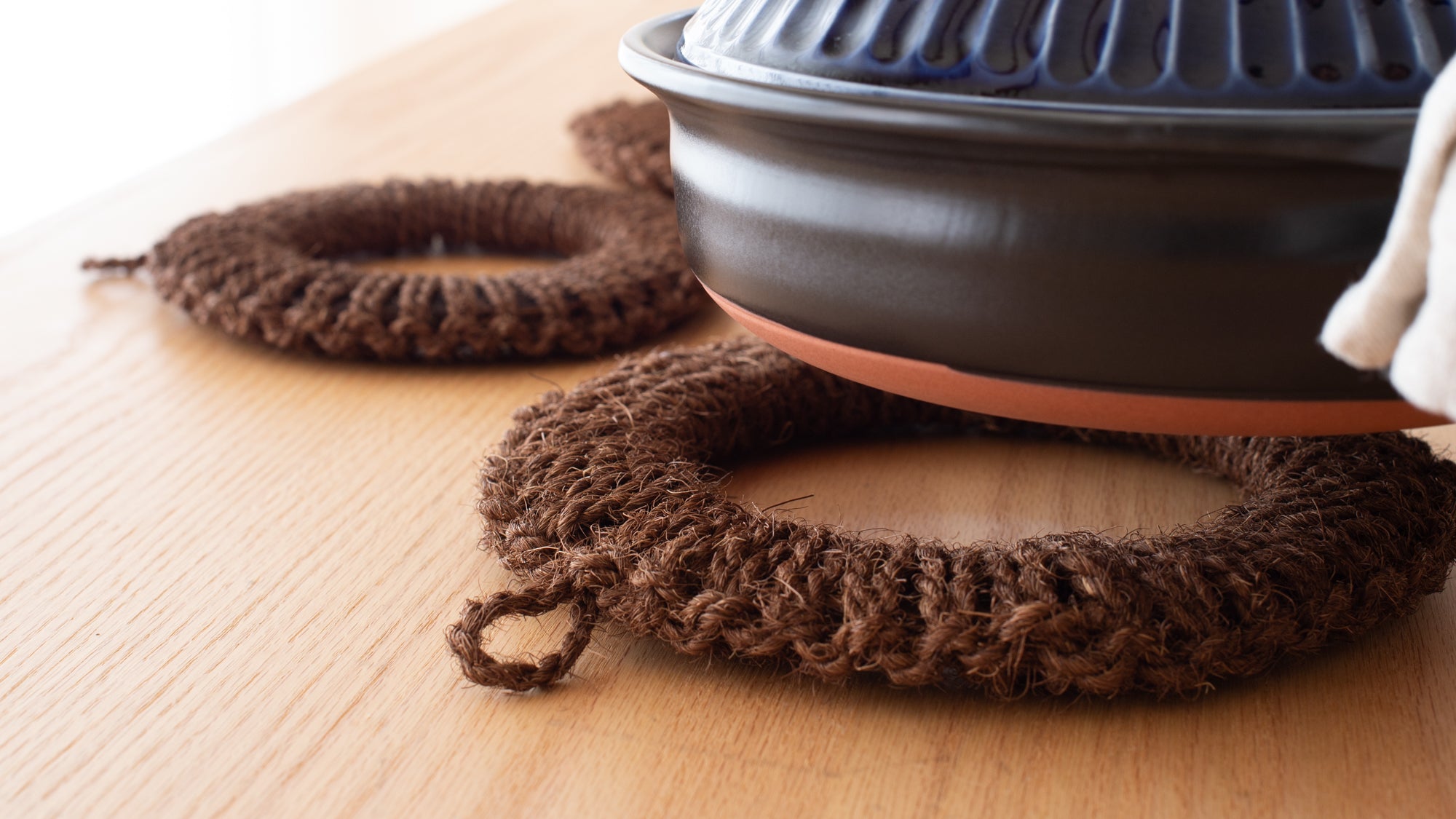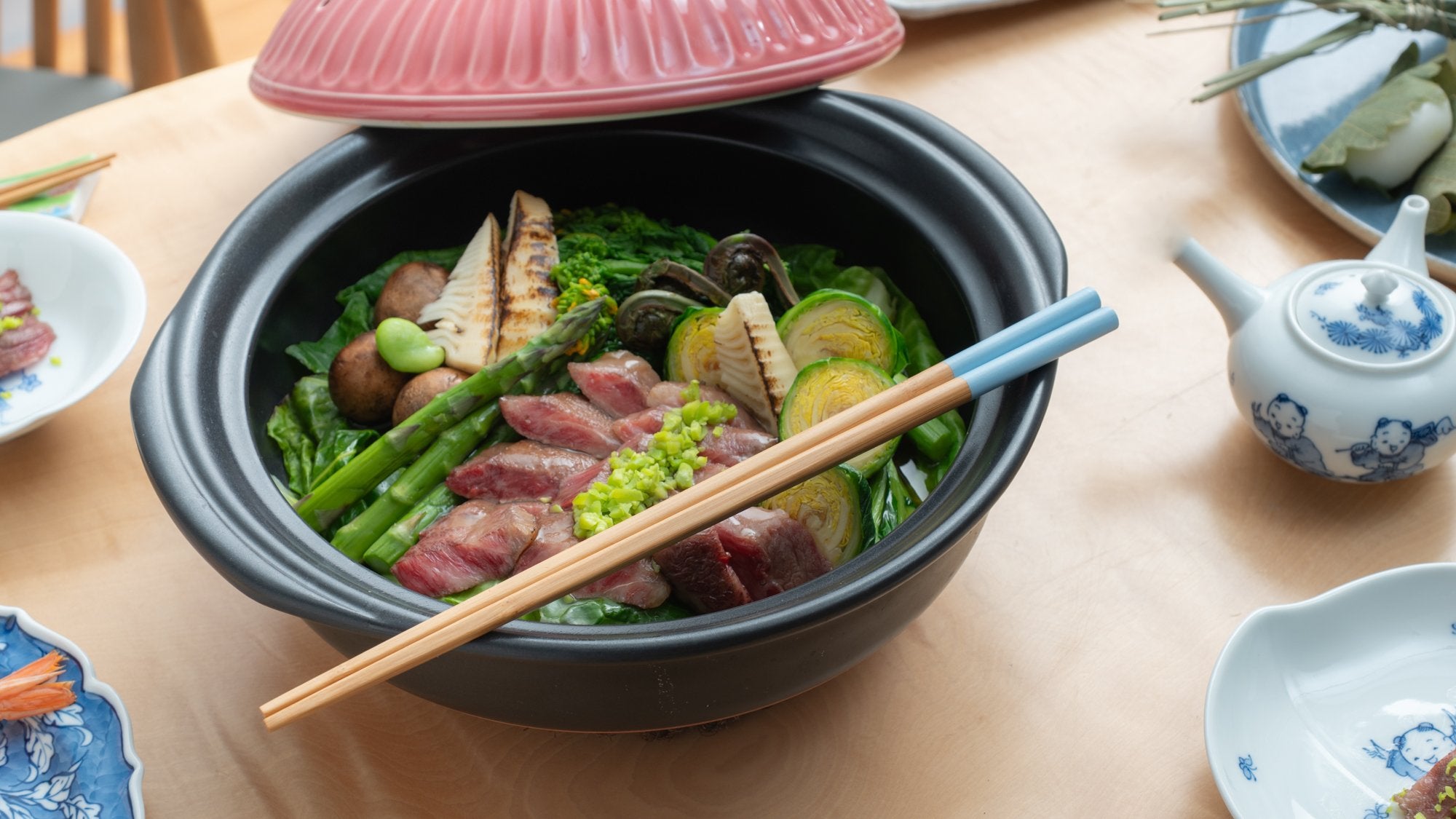
Donabe Clay Pots
Japanese clay pots, known as donabe, are often used in restaurants and homes to serve authentic hot pot dishes like chanko nabe, yudofu, and oden. These winter favorites are especially flavorful when prepared in a traditional donabe.
Experienced chefs and science agree: cooking with a donabe makes food more delicious. Research shows that compared to a metal pot, cooking with a donabe can produce as much as 30% more glutamic acid, a key component of umami.
Features
Glutamic acid, the primary component of umami, tends to be produced in greater amounts when food proteins reach temperatures between 35–55°C (95–131°F). Donabe pots facilitate this process with the following features:

Gentle Heating
Donabe pots heat slowly, bringing out rich umami from the ingredients while preserving a clear broth and keeping everything intact.
Excellent Heat Retention
Donabe pots maintain a stable temperature, retaining heat even after the heat source is turned off and keeping the food inside warm longer.

Effect of Far-Infrared Rays
Far-infrared rays—beneficial in cooking—are naturally emitted by the ceramic of donabe pots. This supports steady and thorough heating, augments flavor, and cooks food evenly to the core.
Related posts
Filters


